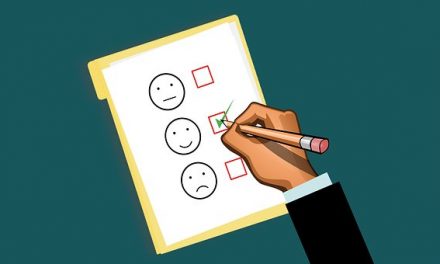Photo by Joshua Rawson-Harris on Unsplash
Certainly to sell at a profit when pricing a product or service , you have to be skilled in the art of pricing.
Of course, you need to keep in mind that even well-to-do Costco customers like free samples as consumer attitudes are changing.
There are various ways you can use to decide if or when to charge either the lowest or highest price. And indeed sometimes it’s best to price between the low and the high.
What I don’t recall is whether one technique is actually discussed in textbooks.
That would be psychological pricing, which is based on emotional appeals to the prospective customer.
Fortunately for businesses, it is not always the lowest price.
Fortunately for businesses, it is not always the lowest price.
Depending on your products or services, psychological pricing is based on the idea that certain prices are more appealing. Keep in mind 18 percent of Americans will only buy at the cheapest price.
Except for loss-leader sales prices, unless you want to be your industry’s overall low-price leader, which is usually a mistake, the trick is to work around this obstacle.
So how can use psychological pricing to your advantage?
Here are six ways:
1. Show different pricing
If you believe your customers don’t have the time or the inclination to spend time on comparison shopping – usually inexpensive retail items under $10 – offer a sale with your previous price inserted next to the new one.
To bring quick attention to the item, change the color, font and size of the new price.
Your customers will readily see the new price as better for them.
2. Appeal to greed pricing
Obviously, in pricing appealing to a buyer’s greed, this is a case in which a customer will pay the full price for one product or service just to get another for free.
Because the strategy is widely used, consumers are accustomed to the tactic. So how do you enhance your chances?
Vary the technique by getting creative, such as “buy one and offer a 25-percent off the next purchase.”
3. Charisma pricing
Charisma pricing means charming your shoppers by convert zero ending numbers to nines – reducing the left number in your price point by one number and ending with 99 cents.
Yes, this works most effectively when the price ends in 99 cents. So, instead of $5.00, make the price $4.99.
Consumers rarely notice. Instead of a $5.00 price, they think it’s only $4.00.
By the way, use a smaller font size for the 99 cents.
4. Moderate pricing
When offering three different but comparable products or services, most Americans choose the middle price. This is true whether you’re selling B2B or B2C.
For instance, when the price choices are $100, $125 and $150, they’ll use choose the middle price — the $125 item.
5. Prestige pricing
This is one of my favorite techniques in a luxurious marketplace. It’s very effective when you and your business have a highly professional image.
For affluent buyers or wannabe affluent buyers, prestige pricing necessitates rounding up the price such as from $999.99 to $1,000.
Whether you’re selling clothing, champagne or cars, such buyers are more inclined to pay a higher price for prestige reasons. They love to brag about the purchase.
6. Comparable prestige pricing
This strategy is similar to No. 5 prestige pricing. But in this case it involves placing two products side-by-side. One is more expensive than the other.
It works best with fashionable brands. Over a shopper’s perception of quality, it appeals to the buyer who will buy the most expensive item over the other.
From the Coach’s Corner, to avoid discounting prices for low-price buyers — in using approaches No. 5 prestige pricing and No. 6 comparable prestige pricing — keep in mind the five value-motivating perceptions that influence why people will buy from you.
Here are the five value-motivating perceptions:
Employees, Spokespersons – 52 percent. The key characteristics are integrity, judgment, friendliness and knowledge. Remember, about 70 percent of your customers will buy elsewhere because they feel they’re being taken for granted by your employees. And customers normally will not tell you why they switched to your competitor.
Image of Company – 15 percent. They are concerned about the image of your company in the community. Cause-related marketing is a big plus in forging a positive image. So is cleanliness and good organization.
Quality of Product or Service Utility – 13 percent. The customer is asking the question – “What will this do for me?”
Convenience –12 percent. Customers like easy accessibility to do business with you. That includes your Web site, telephoning you, and the convenience of patronizing your business.
Price – 8 percent. Price is important, but it’s the least concern among the five value-motivating perceptions.
Here are more tips on pricing:
Elevate Sales via 5 Best Practices in Pricing and HR Training — Sophistication in pricing by salespeople is an excellent driver to grow earnings rather than just looking for ways to cut costs. Instead of growing their profits with sophistication in pricing, many businesspeople miss growth opportunities when they mistakenly cut muscle – usually in human capital and branding. Here’s a better way.
For Stronger Profits, Avoid 11 Typical Pricing Mistakes — In general, how can you manage the sweet spot – between your price-optimization and costs? Here’s how.
To Cope with Rising Costs, Review your Pricing Strategy — Increased costs weigh heavily on the bottom line. If you’re being pressured by costs, it’s probably time to review your pricing strategy.
8 Simple Strategies to Give You Pricing Power — If you’re struggling with pricing strategies, you’re not alone. Many big companies have struggled, too, according to a study. Here are pricing solutions.
Groupon Will Give You a Migraine for Ignoring Pricing Principles — Whether you’re an investor, small-business advertiser or even a customer, daily deal sites can give you a major headache. Continually, there are red flags about Groupon.
“The moment you make a mistake in pricing, you’re eating into your reputation or your profits.”
-Katharine Paine
__________






